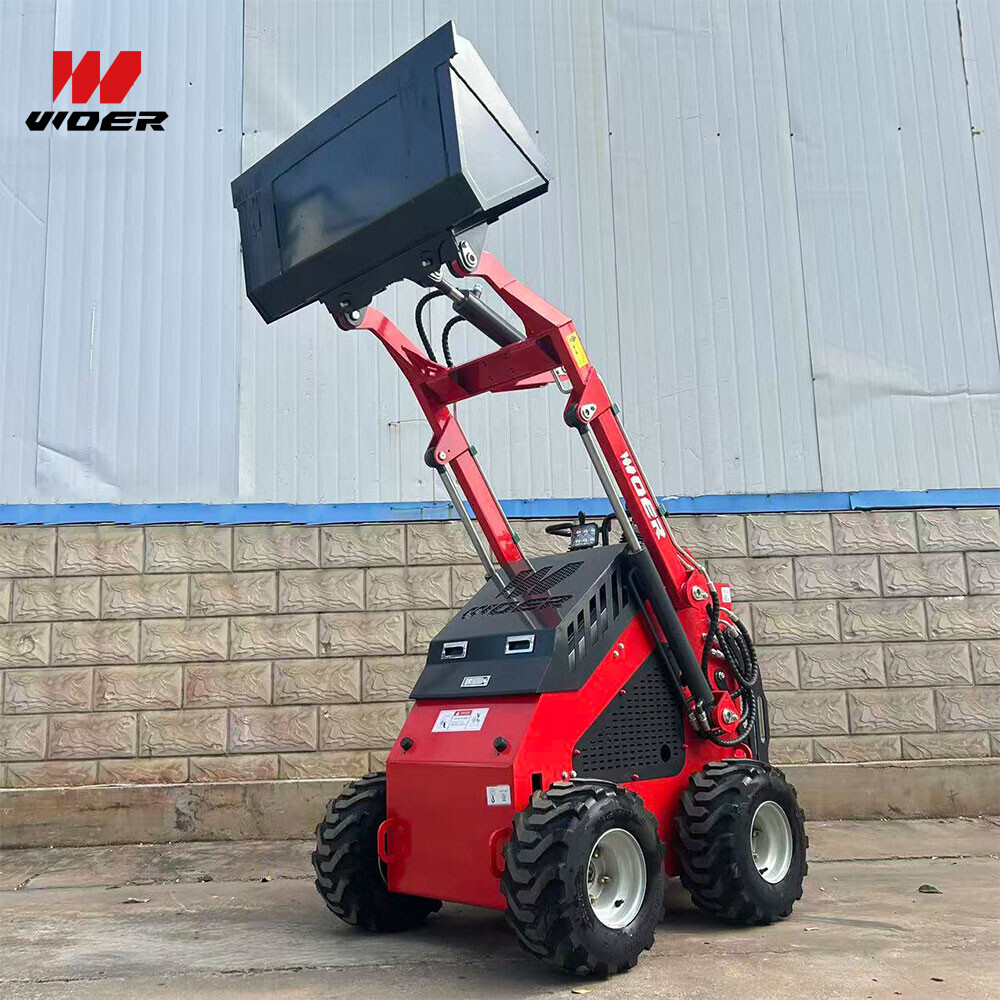Navigation
Contact us
Phone
Message

Introduction
Considering a small skid steer loader for your wood processing operations? This cost-benefit analysis explores key factors like skid steer loader accessories, mini skid steer track loader versatility, and attachment compatibility to help information researchers, operators, and business decision-makers evaluate ROI. Discover how compact track skid steer loaders combine maneuverability with power to optimize material handling in tight spaces.
Definition and Overview
A small skid steer loader is a compact, rigid-frame machine with lift arms that can attach to a wide variety of tools or attachments. Unlike traditional wheeled loaders, mini skid steer track loaders utilize rubber tracks for enhanced stability and reduced ground pressure, making them ideal for wood processing environments where delicate surfaces or uneven terrain are common. These machines typically range from 50 to 90 horsepower, offering the perfect balance between power and agility for lumber yards, sawmills, and pallet manufacturing facilities. The true value of these machines lies in their attachment ecosystem - from grapples and log splitters to mulchers and stump grinders, skid steer loader accessories transform a single machine into a multi-functional workhorse.
Market Overview and Industry Adoption
The global market for compact construction equipment, including track skid steer loaders, is projected to grow at 6.8% CAGR through 2027 according to Off-Highway Research. In wood processing specifically, three key trends are driving adoption: First, the increasing cost of manual labor is pushing operations toward mechanization. Second, tighter urban mill locations demand equipment with zero-turn capabilities that mini skid steer track loaders excel at. Third, the rise of biomass fuel production has created demand for machines that can efficiently process waste wood. Leading manufacturers now offer specialized configurations for forestry applications, including reinforced cabs for operator protection and high-flow hydraulic systems (up to 30 gpm) to power demanding attachments like wood chippers.
Technical Performance Comparison
The data reveals why small skid steer loaders with tracks dominate wood processing: Their 67% lower ground pressure prevents damage to finished lumber stacks, while universal attachment compatibility means one machine can handle log loading, debris clearing, and site preparation. The compact dimensions (typically under 60" width) allow navigation between lumber drying racks where larger equipment would be impractical.
Cost Analysis and ROI Calculation
For a mid-sized sawmill processing 5 million board feet annually, the capital outlay for a new skid steer track loader ranges from $35,000 to $55,000 depending on configuration. However, the true cost-benefit emerges when analyzing operational efficiencies: A single operator can replace 3-4 manual laborers in log sorting operations, achieving payback in 14-18 months. Fuel consumption averages just 1.5 gallons per hour compared to 3+ gallons for larger equipment. Maintenance costs are 30-40% lower than wheeled alternatives due to reduced drivetrain complexity. When factoring in the ability to quickly switch between skid steer loader attachments - eliminating the need for multiple dedicated machines - the total cost of ownership becomes compelling. Financing options with 5-7 year terms can bring monthly payments below $800, often less than the labor costs they replace.
Application Scenarios in Wood Processing
Three primary use cases demonstrate the versatility of mini skid steer loaders in lumber operations: First, in log yard management where the machine's 360-degree visibility and precise controls allow safe stacking of raw materials. Second, in mill cleanup operations where pallet forks and brush grapples efficiently handle waste wood. Third, in finished product handling where non-marking tracks prevent damage to premium hardwood flooring bundles. A case study from an Oregon cedar mill showed a 40% reduction in product damage after switching from forklifts to a track skid steer loader with specialized clamp attachments. The machine's ability to work in just 8 feet of clearance revolutionized their inventory management in tight urban spaces.
Why Choose Our Solutions
With over 15 years specializing in wood processing equipment configurations, we offer unmatched expertise in matching skid steer loader accessories to your specific material handling challenges. Our partnership with leading manufacturers ensures you receive machines with forestry-specific enhancements like debris-resistant cooling systems and deluxe suspension seats for all-day operator comfort. Every recommendation comes with a detailed ROI projection based on your production volumes and labor costs. Contact our equipment specialists today for a free site evaluation and discover how the right small skid steer loader can transform your operation's efficiency.
FAQ Section
Q: How does a mini skid steer track loader compare to a traditional forklift for lumber handling?
A: Track loaders offer superior stability on uneven terrain, 360-degree visibility, and the ability to quickly switch between pallet forks, clamps, and other specialized skid steer loader attachments - making them far more versatile than single-function forklifts.
Q: What maintenance is required for track systems in sawmill environments?
A: We recommend daily track tension checks, weekly undercarriage cleaning to remove wood debris, and replacement of track pads every 1,200-1,500 hours in abrasive conditions. Our maintenance programs include customized schedules based on your specific wood species and processing volumes.
Q: Can small skid steer loaders handle wet or frozen wood?
A: Absolutely. Modern high-flow hydraulic systems (available on premium models) provide the power needed for processing dense or frozen material. Specialized grapples with serrated edges maintain secure holds on slippery logs, while heated operator compartments ensure productivity in cold weather operations.

This stunning beach house property is a true oasis, nestled in a serene coastal community with direct access to the beach.
Contact
West Street, Melbourne Victoria 3000 Australia